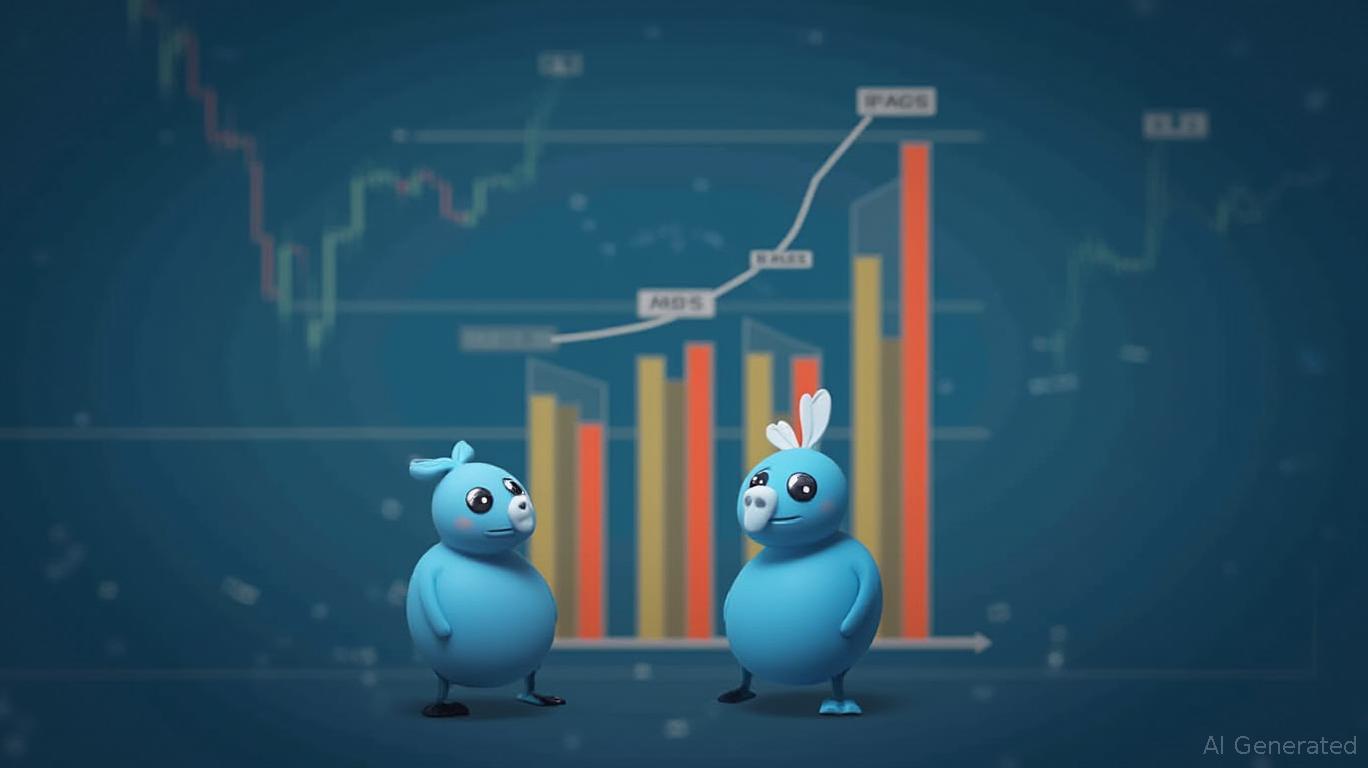CPLB: Navigating Rising Rates with Active Flexibility and Multi-Sector Diversification
In a world where rising interest rates and geopolitical uncertainty have turned fixed income investing into a high-wire act, the NYLI MacKay Core Plus Bond ETF (CPLB) emerges as a compelling solution. By blending high yield, municipal, and structured credit exposures with rigorous risk management, this actively managed ETF aims to deliver income and stability while outpacing traditional core bond strategies like the Bloomberg Aggregate Bond Index (AGG). Here's why investors should consider CPLB as a defensive yet income-boosting addition to their portfolios.
The Multi-Sector Edge: Income and Diversification in One Package
CPLB's core strength lies in its multi-sector approach, which combines three high-conviction segments:
1. High Yield Corporate Bonds: Offering above-average yields to offset the income drag of rising rates.
2. Municipal Bonds: Tax-advantaged securities that shine in higher-rate environments, especially for investors in high tax brackets.
3. Structured Credit: Including asset-backed securities and mortgage-backed bonds, which provide steady cash flows and diversification.
This mix contrasts sharply with the AGG, which is heavily weighted toward investment-grade corporate bonds and Treasuries. While the AGG returned 2.78% in Q1 2025 (a period marked by inflation fears and equity volatility), CPLB's active management allows it to dynamically tilt toward higher-yielding sectors while avoiding overexposure to rate-sensitive assets.

Risk Mitigation: Active Management as a Shield Against Volatility
The AGG's passivity is both its strength and its weakness. When rates rise or credit spreads widen—as they did in Q1 2025—its fixed allocation to rate-sensitive sectors can amplify losses. CPLB's active management seeks to counter this by:
- Shortening Duration: Peers like the iShares Flexible Income Active ETF (BINC) reduced duration to 3.5 years versus the AGG's median of 5.9 years, lowering sensitivity to rate hikes.
- Credit Selection: MacKay's team employs bottom-up analysis to avoid issuers with weak fundamentals, a critical advantage in widening spreads.
- Geographic Flexibility: Unlike the AGG's U.S.-centric focus, CPLB can allocate to emerging markets debt or international opportunities when valuations are attractive.
The result? A fund designed to outperform in volatile environments. While the AGG's returns were modest in Q1, CPLB's active peers in the Core-Plus category saw 70% outperform the benchmark over 12 months through March 2025.
Q1 2025 Performance: A Stress Test for Fixed Income
Though specific returns for CPLB are not detailed in available data, its strategy aligns with the Q1 2025 market narrative. During the quarter:
- Equities fell sharply (S&P 500 dropped 4.27%), but bonds acted as a stabilizer.
- Municipal bonds underperformed (returning -0.22%), while structured credits and high yield held up better.
- Active managers like CPLB's team could have navigated these shifts by:
- Overweighting structured credit to capture steady cash flows.
- Trimming municipal exposure as rates stabilized.
- Maintaining shorter durations than the AGG to limit rate-risk.
The AGG's 2.78% return was respectable, but its lack of flexibility left it vulnerable to sector-specific headwinds. CPLB's active approach likely offered a smoother ride.
Parent Support and Team Expertise: A Foundation for Success
CPLB is backed by MacKay Shields, a firm with over 50 years of fixed income expertise. Its multi-sector and high-yield teams collaborate to analyze global markets, from U.S. munis to emerging markets debt. This dual focus allows the ETF to exploit opportunities across regions and sectors, a luxury passive benchmarks lack.
The firm's emphasis on risk controls—such as stress-testing portfolios against rate hikes and credit downgrades—adds another layer of defense. In Q1's volatile backdrop, this discipline likely helped CPLB avoid pitfalls like overexposure to widening spreads.
Investment Thesis: CPLB as a Core Satellite
For investors, CPLB is not a replacement for the AGG but a strategic complement. Consider these advantages:
- Income Boost: Higher yields from high-yield and structured credits can lift portfolio returns in a low-yield world.
- Volatility Management: Active duration and credit adjustments aim to reduce downside risk during rate hikes.
- Diversification: Its multi-sector tilt offers exposure to corners of the bond market the AGG ignores.
Name |
|---|
| iShares Core U.S. Aggregate Bond ETFAGG |
| NYLI MacKay Core Plus Bond ETFCPLB |
Final Takeaway: A Steady Hand in Unsteady Times
In a rising-rate environment where traditional bonds struggle, CPLB's blend of active management and multi-sector diversification makes it a must-consider for fixed income portfolios. While it may underperform in Treasury-friendly environments, its ability to navigate credit cycles and shorten duration gives it an edge when volatility strikes.
Actionable Idea: Allocate 10-20% of your core bond allocation to CPLB to boost income and reduce reliance on rate-sensitive sectors. Pair it with short-term Treasuries for further stability.
In a world of trade wars and inverted yield curves, flexibility is king—and CPLB wears the crown.
Data as of June 19, 2025. Past performance does not guarantee future results. Always conduct your own research or consult a financial advisor before making investment decisions.
Sign up for free to continue reading
By continuing, I agree to the
Market Data Terms of Service and Privacy Statement

Comments
No comments yet